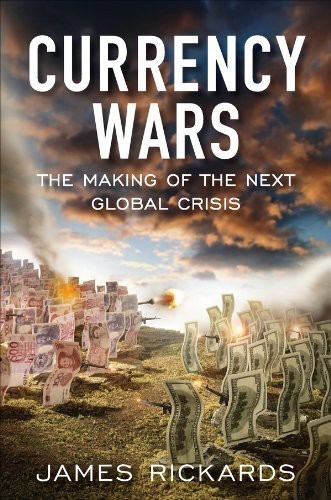
Currency Wars
The Making of the Next Global Crisis
کتاب های مرتبط
- اطلاعات
- نقد و بررسی
- دیدگاه کاربران
نقد و بررسی

October 24, 2011
In 2008, Rickards, an investment banker with extensive experience in hedge funds, was invited to participate in a seminar sponsored by the Department of Defense, which examined the safety of U.S. sovereign wealth funds in the case of economic warfare. As Rickards explains, "Sovereign wealth funds are huge investment pools established by governments to invest their excess reserves." He participated in further seminars that addressed the impact of futures markets, derivatives, and more, on strategic commodities such as oil, uranium, copper, and gold. Rickards's first book is an outgrowth of his contributions and a later two-day war game simulation held at the Applied Physics Laboratory's Warfare Analysis Laboratory. He argues that a financial attack against the U.S. could destroy confidence in the dollar. In Ricards's view, the Fed's policy of quantitative easing by lessening confidence in the dollar, may lead to chaos in global financial markets. Possible strategies for dealing with such a situation include a return to the gold standard. Though the book will no doubt interest policymakers, even non-experts will be rewarded for their efforts.

October 15, 2011
A pioneer in the use of market intelligence for strategic purposes warns of the coming collapse of the dollar-based financial system. In Rickards' view, the world is currently going through a third currency war ("CWIII") based on competitive devaluations. CWII occurred in the 1960s and '70s and culminated in Nixon's decision to take the dollar off the gold standard. CWI followed WWI and included the 1923 German hyperinflation and Roosevelt's devaluation of the dollar against gold in 1933. Rickards demonstrates that competitive devaluations are a race to the bottom, and thus instruments of a sort of warfare. CWIII, he writes, is characterized by the Federal Reserve's policy of quantitative easing, which he ascribes to what he calls "extensive theoretical work" on depreciation, negative interest rates and stimulation achieved at the expense of other countries. He offers a view of how the continued depreciation and devaluation of the dollar will ultimately lead to a collapse, which he asserts will come about through a widespread abandonment of a worthless inflated instrument. Rickards also provides possible scenarios for the future, including collaboration among a variety of currencies, emergence of a world central bank and a forceful U.S. return to a gold standard through an emergency powers–based legal regime. The author emphasizes that these questions are matters of policy and choice, which can be different. Intriguing thinking about these current potentials and their history, especially given the dollar's pervasiveness in the pricing and exchange of global assets.
(COPYRIGHT (2011) KIRKUS REVIEWS/NIELSEN BUSINESS MEDIA, INC. ALL RIGHTS RESERVED.)

October 15, 2011
Rickards, experienced financial adviser, investment banker, and risk manager, tells us we are in a new currency war that could destroy faith in the U.S. dollar; he examines that war through the lens of economic policy, national security, and historical precedent. As a national security issue, he tells a fascinating story of his involvement with the Pentagon and other agencies in designing and participating in a war game using currencies and capital markets, instead of ships and planes, to gain early warning of attacks on the U.S. dollar. The author concludes that mainstream economists and central bankers alike are well aware of dollar weakness and the risks to international monetary stability from the new currency wars. He sees four prospects for the dollarmultiple reserve currencies, special drawing rights, gold, and chaos. Rickards' ideas are controversial and will attract support and criticism across many disciplines. Nevertheless, he presents a compelling case for his views and offers thought-provoking information for library patrons. This is a must-read book.(Reprinted with permission of Booklist, copyright 2011, American Library Association.)

























دیدگاه کاربران